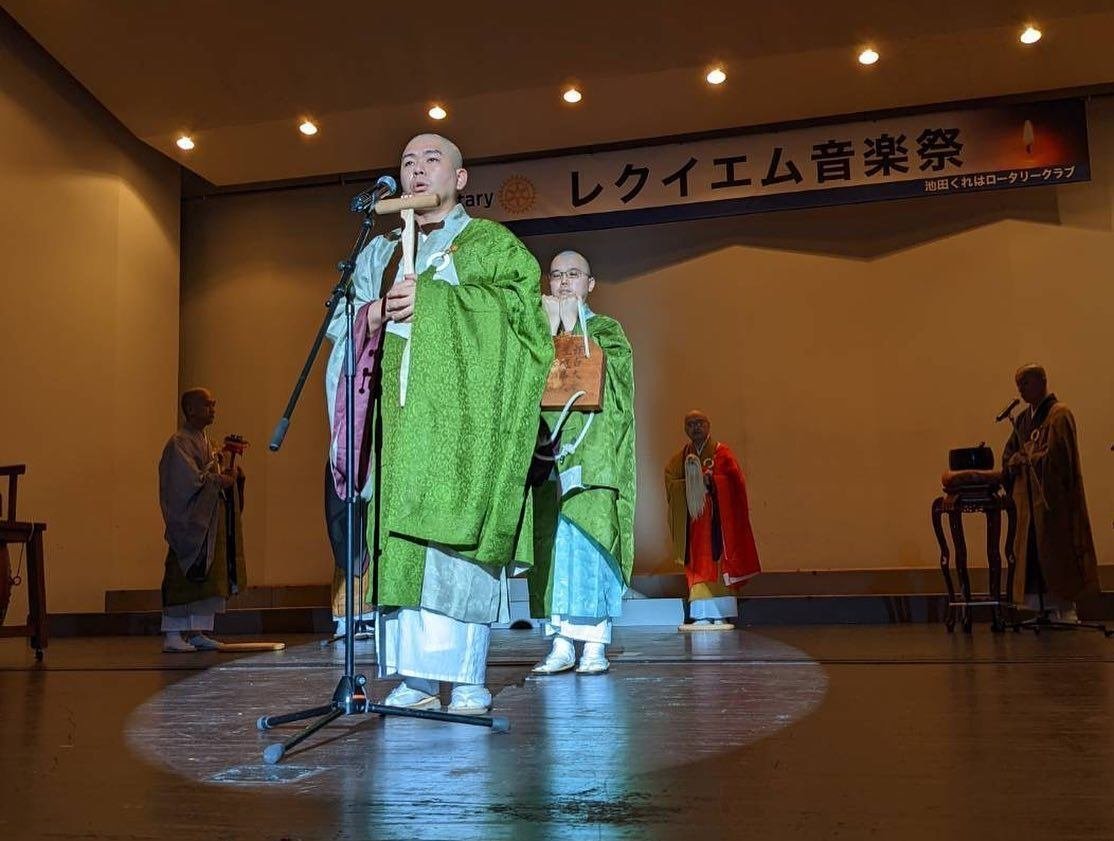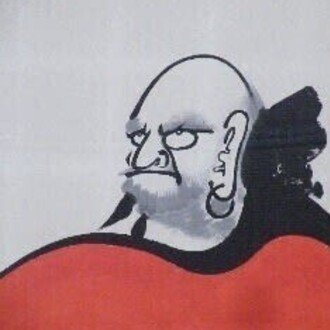
仏教音楽も加わり “鎮魂”と“感謝”を込め開催された「レクイエム音楽祭」 "Requiem Music Festival" held with "requiem" and "gratitude" with the addition of Buddhist music
新型コロナウィルス感染症により、尊い命を失われた方々に対し慰霊のための鎮魂と、命の危険を顧みず医療に献身的に携わっている方々を労い感謝を捧げる「レクイエム音楽祭」が6月12日に、池田くれはロータリークラブ(服部潤承会長<佛日寺住職>)の主催で、池田市民文化会館アゼリアホールで行われた。
The "Requiem Music Festival" is a memorial service for those who have lost their precious lives due to the new coronavirus infection, and the "Requiem Music Festival" is dedicated to those who are devoted to medical care without regard to the danger of their lives. On the 12th of March, Kure Ikeda was sponsored by the Rotary Club (Chairman Junsho Hattori <President of Buddhist Temple>) and was held at the Azeria Hall of the Ikeda Citizens' Culture Center.
このような音楽祭は今回が初めて。同クラブが各方面に声をかけ6団体の賛同で実現した。その中に、一般では見るチャンスが少ない僧侶による「声明(しょうみょう)」や「梵唄(ぼんばい)」が慰霊の鎮魂と感謝の意を込め唱えられ、会場に響きわたった。
This is the first time for such a music festival. The club called out to all sides and realized it with the support of 6 groups. Among them, "shomyo" and "bonbai" by monks, who generally have few chances to see, were chanted with requiem and gratitude for the memorial service, and echoed in the venue.
「声明」とか「梵唄」は一般の我々には馴染がないが、分かりやすく簡単に言うなら仏典に節をつけた仏教音楽のことをいう。同音楽祭では池田市の真言宗久安寺が「声明」を、そして佛日寺が「梵唄」で出演。
声明は、真言宗に伝わるもので、今回はその中の一つである「散華(さんげ)」で仏を讃え、花を散らし供養した。古くは蓮の花びらを散らしたが、現在では花弁形の紙製が用いられている。今回は、同音楽祭を「鎮魂」と「生きる」という強い思いを込め散華された。
"Shomyo" and "Bonbai" are not familiar to us in general, but in simple terms, they are Buddhist music with clauses in the Buddhist scriptures. At the same music festival, Shingon Sect Kuyan-ji in Ikeda City will perform in "Shomyo", and Butsunichi-ji will perform in "Bonbai".
The shomyo is handed down to the Shingon sect, and this time, one of them, "Sange," praised the Buddha and scattered flowers to make a memorial service. In the old days, lotus petals were scattered, but nowadays petal-shaped paper is used. This time, the music festival was scattered with a strong desire to "requiem" and "live."

梵唄は、隠元禅師によって伝えられた、黄檗宗独自の声明である。中国明代の唐韻で発音し、経典を唱えるときに鳴らす梵音具である鏧子(けいす)や木魚(もくぎょ)、大引鏧(おおいんきん)、小引鏧(こいんきん)、香灯(ひゃんてん)、鐃鈸(にょうはち)などの鳴り物法具でリズムとって読誦する。前半は、亡くなられた方々が成仏されることを願い三宝讃を、そして後半は、仏様がこの世で苦しんでいる人々を救うため西方讃という内容の梵唄を披ろう。
The song is a shomyo unique to the Obaku sect, which was given by the Zen master Ingen. It is pronounced in the Chinese Ming dynasty's Chinese rhyme, and it is a sword sound tool that sounds when chanting a scripture. Read the rhythm with a sounding tool such as hyanten and Nyohachi.In the first half, they performed the Sanposan, hoping that the deceased be made into Buddha, and in the second half, they performed a song called Seihosan, in order to save the suffering people in this world.


米山奨学生学友や女声合唱の皆さん、そして高校生による吹奏楽や子供たちの合唱に仏教音楽が加わり、いままでにない音楽祭として、新型コロナウィルス感染がいまも続く中で大きな感動を与えた。
With the addition of Buddhist music to the alumni of Yoneyama Scholarship students, female choruses, and high school students' wind music and children's choruses, it was a great impression as the new corona virus infection continued as an unprecedented music festival.


リポート/ 渡邉雄二 写真/ 黄檗宗佛日寺 Reported by Yuji Watanabe Photos by Butsunichu-ji Temple
いいなと思ったら応援しよう!

